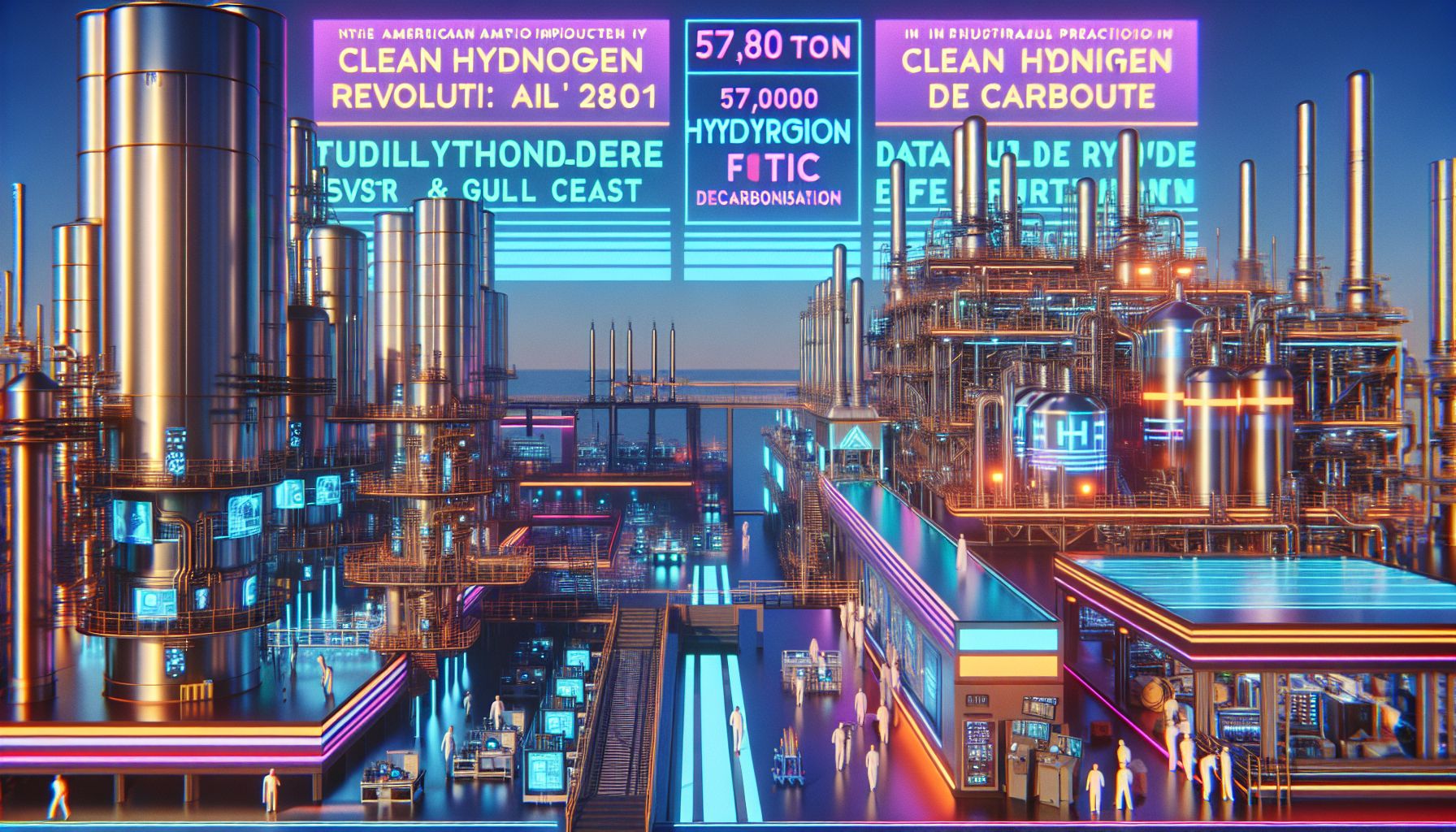Midwest and Gulf Coast Score Big: $2.2B Hydrogen Revolution Takes Shape

Illinois, Thursday, 21 November 2024.
In a groundbreaking move this November 2024, the US Department of Energy commits massive funding to transform America’s heartland and Gulf Coast into clean hydrogen powerhouses. These hubs promise to produce over 1,000 tonnes of hydrogen daily, potentially creating 57,000 jobs while revolutionising industrial decarbonisation. However, political uncertainty looms as Trump’s campaign questions hydrogen’s safety and effectiveness.
A Bold Vision for Clean Energy
Imagine a world where the Midwest and Gulf Coast lead the charge in clean energy innovation. With the US Department of Energy’s recent announcement, this vision is closer to reality. The Midwest Alliance for Clean Hydrogen, known as MachH2, and the HyVelocity hydrogen hubs have been awarded a combined $2.2 billion to spearhead this transformation[1][2]. These initiatives are part of a broader $7 billion effort under President Biden’s Investing in America agenda to bolster the hydrogen sector, aiming to reduce emissions and enhance energy independence[5].
Funding and Future Prospects
The funding breakdown is straightforward: the Midwest hub receives up to $1 billion, while the Gulf Coast hub, led by GTI Energy, secures up to $1.2 billion. This support will not only facilitate the production of over 1,000 tonnes per day of hydrogen but also aim to create 57,000 direct jobs across both regions[4][6]. Key players like Air Liquide, Plug Power, and ExxonMobil are involved, focusing on harnessing diverse energy resources such as wind, natural gas, and nuclear power in states like Illinois, Indiana, and Michigan[1][5].
The Role of Hydrogen in Decarbonisation
Hydrogen is touted as a flexible energy carrier, pivotal in decarbonising industries like steel, glass production, and heavy-duty transportation. The MachH2 hub plans to leverage the Midwest’s diverse energy portfolio to achieve near-zero carbon emissions, enhancing economic competitiveness while addressing environmental concerns[5]. Dr. Dorothy Davidson, CEO of MachH2, emphasises that this federal investment is a ‘once-in-a-lifetime opportunity’ to reduce emissions and create clean energy jobs[1].
Challenges and Political Landscape
Despite the optimistic outlook, the road ahead isn’t without hurdles. Former President Trump’s campaign has expressed scepticism about hydrogen, describing it as ‘untested’ and fraught with safety concerns. This political uncertainty could impact the long-term support and development of these hubs[6]. Nonetheless, proponents like Frank Wolak of the Fuel Cell and Hydrogen Energy Association believe these hubs will be crucial for driving domestic clean hydrogen production and utilisation[6].
Community Impact and Engagement
The success of these projects hinges on community engagement and the ability to address local concerns. The HyVelocity hub, with its 80 participants from academia and local governments, is a testament to the collaborative effort needed to build a regional hydrogen economy that benefits Gulf Coast communities[1]. Robert Bullard, a professor at Texas Southern University, highlights the importance of ensuring these projects do not exacerbate pollution but rather contribute positively to historically overburdened areas[6].
A New Era for Clean Hydrogen
As the first phase of these projects kicks off, spanning 12 to 18 months, the focus will be on planning, design, and community engagement. The hope is that these hubs will set a precedent for future clean energy initiatives, driving both environmental and economic benefits. With funding in place and a clear vision, the Midwest and Gulf Coast are poised to lead the charge in America’s clean hydrogen revolution, despite the challenges that lie ahead[1][2][5].